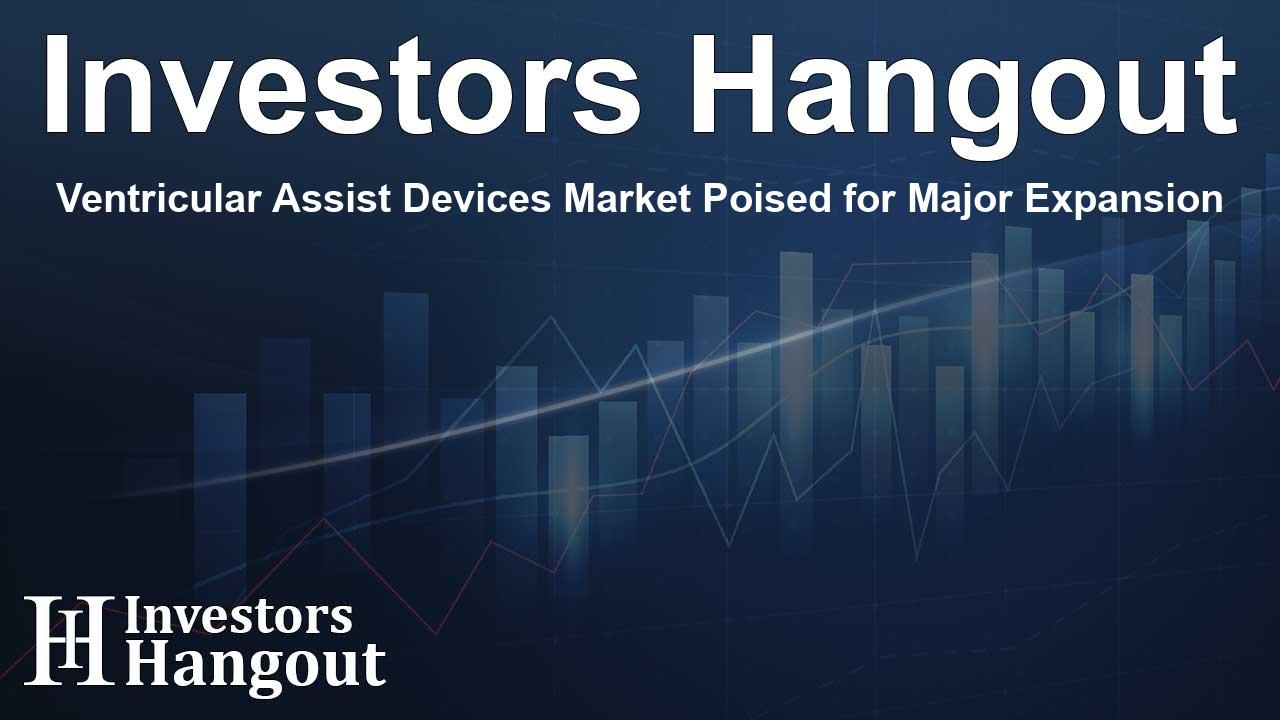Ventricular Assist Devices Market Poised for Major Expansion

The Future of the Ventricular Assist Device Market
The global market for Ventricular Assist Devices (VADs) has emerged as a crucial segment in cardiac care, with forecasts indicating a surge to USD 3.3 billion by 2032. This upward trend is fundamentally linked to the rising prevalence of heart failure and ongoing technological advancements in medical devices.
Market Growth Drivers
The accelerating growth of the VAD market can be attributed to several key factors. Firstly, the increasing incidence of heart failure among various populations necessitates effective and robust medical solutions. The advancements in VAD technology are also making these devices more durable and reliable, which improves clinical outcomes for patients. A growing geriatric population, often affected by cardiovascular issues, is further catalyzing market expansion.
Rising Demand for Mechanical Circulatory Support
As more individuals seek mechanical circulatory support, the demand for innovative VAD solutions is on the rise. Continuous development and refinement of these devices are providing patients with new hope and improved quality of life. With many patients in need of prolonged support, VAD devices are becoming an essential component in managing advanced heart failure.
Regional Insights into Market Trends
Focusing on the U.S. market, it was valued at approximately USD 0.73 billion in 2023 and is projected to double within a decade. U.S. healthcare infrastructure supports a favorable environment for VAD technology through significant investment in research and development and comprehensive healthcare facilities.
Market Dynamics in North America
The North American landscape for VADs is quite promising, primarily due to enhanced healthcare facilities and a rising number of heart failure cases. The presence of leading manufacturers and continuous research initiatives are strong contributors to the growth in this region.
Major Players in the VAD Market
Key companies leading the VAD market include Abbott Laboratories, Medtronic, and Jarvik Heart Inc., among others. These companies are at the forefront of innovation, continually bringing forth new technologies and devices that improve patient outcomes. The competitive landscape is vibrant, with companies investing heavily in R&D to gain an advantage.
The Role of Implantable Devices
Among the various segments in the VAD market, implantable devices hold a remarkable 75.8% share. Patients benefit greatly from these systems, as they are designed for long-term use and provide improved mobility and reduced infection risks. These factors significantly enhance the quality of life for heart failure patients.
Segments of the Ventricular Assist Device Market
The VAD market is segmented into several categories:
- By Application: The destination therapy segment leads with a 43.1% share as more patients seek permanent solutions for heart failure.
- By Product: Left Ventricular Assist Devices (LVADs) dominate this category, frequently used for patients with end-stage heart failure.
- By Flow Type: Continuous flow devices are favored, holding 89.9% market share due to their superior clinical outcomes.
- By Design: Implantable devices are preferred for their convenience and effectiveness.
Growth Opportunities in the Asia-Pacific Region
In the Asia-Pacific region, the VAD market is set to register the fastest growth rates, driven by improving healthcare access and rapid advancements in medical technology. As countries like China and India enhance their healthcare infrastructures, the adoption of sophisticated cardiac devices is expected to rise significantly.
Conclusion
The Ventricular Assist Device market is on an impressive uptrend, with significant growth projected in the coming years. Continuous innovations, coupled with the rising incidences of cardiovascular diseases, further reinforce the importance and relevance of VADs in today's healthcare landscape. Companies involved in the research and development of VAD technology are not only improving survival rates but also transforming patient experiences and quality of life.
Frequently Asked Questions
What is the projected market size for Ventricular Assist Devices by 2032?
The market is expected to reach USD 3.3 billion by 2032.
What factors are driving the growth of this market?
The rise in heart failure cases and advancements in medical technology are the primary drivers.
Which regions are leading in the VAD market?
North America currently dominates the market, with significant growth expected in the Asia-Pacific region.
What types of Ventricular Assist Devices are most commonly used?
Left Ventricular Assist Devices (LVADs) are widely used for patients with end-stage heart failure.
Who are the major players in the market?
Key players include Abbott Laboratories, Medtronic, and Jarvik Heart Inc., among others.
About The Author
Contact Thomas Cooper privately here. Or send an email with ATTN: Thomas Cooper as the subject to contact@investorshangout.com.
About Investors Hangout
Investors Hangout is a leading online stock forum for financial discussion and learning, offering a wide range of free tools and resources. It draws in traders of all levels, who exchange market knowledge, investigate trading tactics, and keep an eye on industry developments in real time. Featuring financial articles, stock message boards, quotes, charts, company profiles, and live news updates. Through cooperative learning and a wealth of informational resources, it helps users from novices creating their first portfolios to experts honing their techniques. Join Investors Hangout today: https://investorshangout.com/
The content of this article is based on factual, publicly available information and does not represent legal, financial, or investment advice. Investors Hangout does not offer financial advice, and the author is not a licensed financial advisor. Consult a qualified advisor before making any financial or investment decisions based on this article. This article should not be considered advice to purchase, sell, or hold any securities or other investments. If any of the material provided here is inaccurate, please contact us for corrections.
